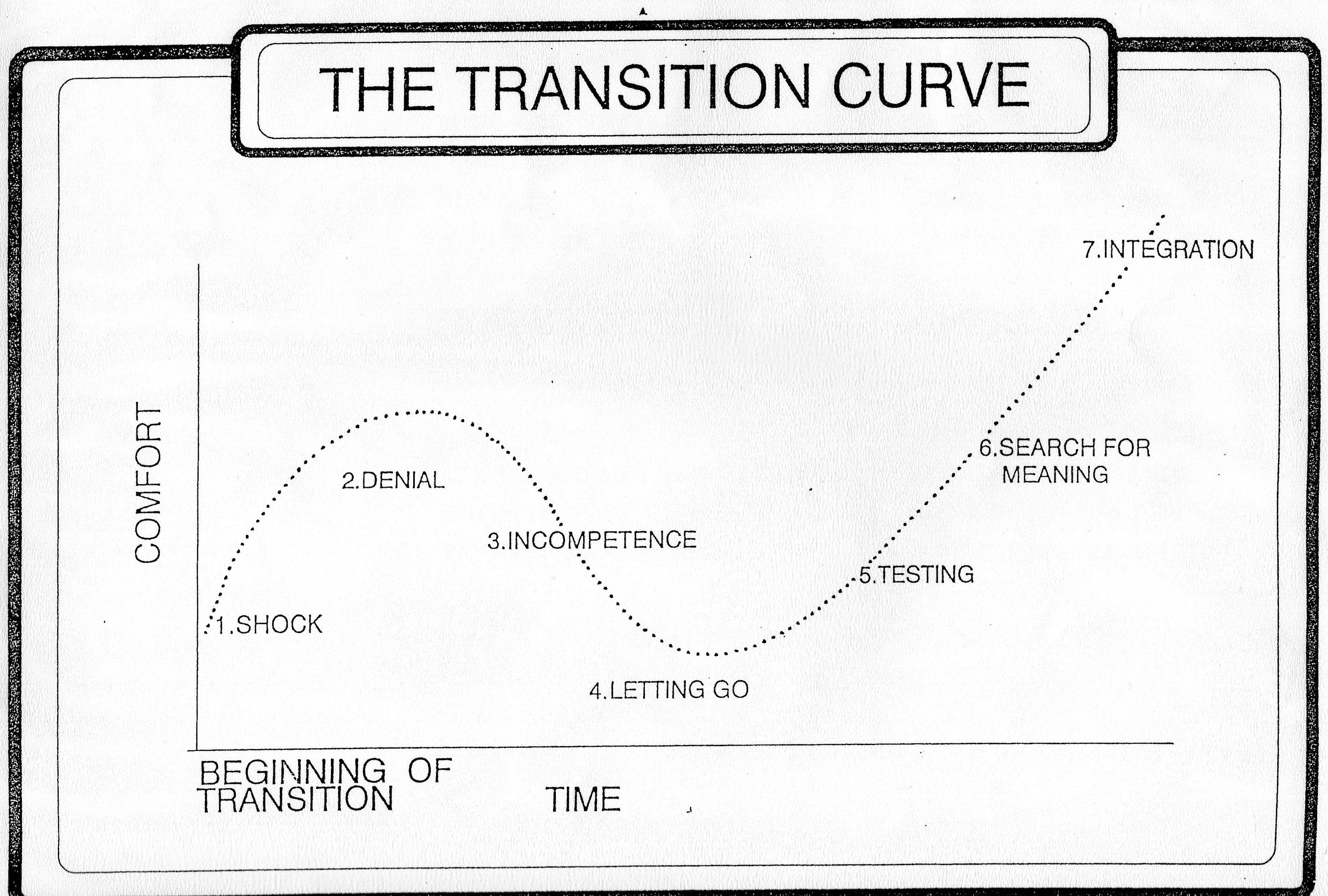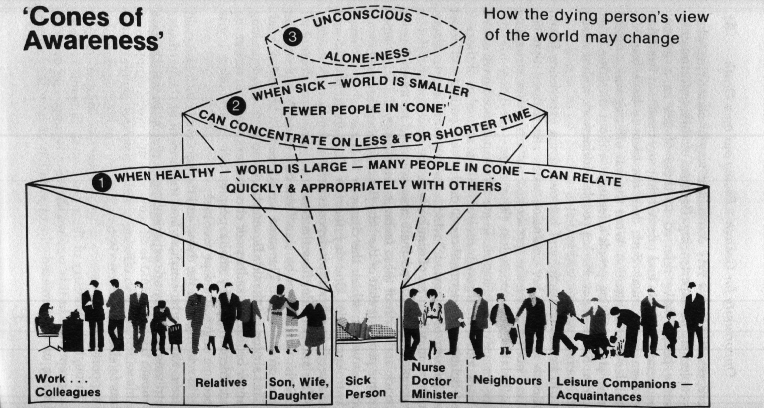Elsewhere, I have looked at our place in our community. The ‘space’ we occupy – and did occupy.
Here I want to look more closely at time and, in particular, the process of change over time. This is a heavily researched area as funny things happen to human beings when they experience large changes.
Let’s look into this in more detail. I have some further information for you at Do you need some change?
For practical purposes, there is a useful diagram:

This diagram shows a ‘typical’ initial response to change is a sense of shock. We can move into denial to protect ourselves from any discomfort. The consequent distress can lead to making mistakes as we try to hold on to an ‘old normal’ that no longer operates. As the issue resolves, we are able to let go of the older normal, re-write our script and seek out a ‘new normal’. We can test out a way ahead with a series of safe experiments, until we are able to write a new page or chapter in our lives.
That’s the theory! In actual practice, as i say on my Welcome page, you will do things your own way. Even so, its another useful road map to keep in mind as you design even more experiments.
EXPERIMENT
Take a recent visible change in your life. Look for something manageable – rather than a large issue such as death, divorce or separation. A good example for me is something like losing keys: life can literally come to a halt when that happens.
Take a sheet of paper and identify the loss and change in one short sentence.
Consider: what did it stop you doing? How, if at all, did it bring you to a halt?
For the short time that you were stuck for an answer – how did you behave?
What were the dominant feelings around; there were probably a few. Name them and, as it helps, use the 1 to 10 Subjective Unit of Discomfort (SUD) to ‘measure’ the intensity of those feelings. I am going to encourage you to use SUD’s in other safe experiments. Do not let other people tell you what your SUD should be or could be – it is a subjective experience – that is, only you know what the level of feeling is. SUD’s are helpful as they help us to notice reactions – feelings and sensations. They go up, or down, or stay the same. We are hard-wired for this to happen and it does help to just notice this experience.
What was the thing that helped you move on? What did you need to feel get enough energy to resolve the change that had arisen?
Did you learn something from the experience that reduced the chances of something similar happening in the future or, at least, being better prepared for the prospect?
Were there ‘solutions’ that simply could not, or would not, work?
How did your feelings alter as you moved from loss, to attempted solutions to some kind of resolution?
When you have completed a working record, return to the transition curve diagram, above, and see if you notice ways in which your ‘journey’ to a result – fits in with the transition curve – that general account of the way in which humans adapt to events and challenges.
As you look ahead in time, is there some outstanding task still to be completed? For example, what steps can you take to reduce future losses, in the case of the keys or putting energy into new interests – or expanding your social network – in the face of broken relationships.
The transition curve, above, works well for many changes. Most often, we will find new opportunities and new directions.
At the end of our lives, that situation can change. In the illustration to follow, note how our circle of contacts widens and narrows as the years go by:

Now, for some, this information will not be easy to face. You may notice discomfort, e.g. anxiety or nausea. These are normal reactions to threats about our future. You may find the experiments around CONTROLLED BREATHING or DIVERSION and DISTRACTION are of some help.
FURTHER EXPERIMENT: return to your road map and any results you generated doing this safe experiment. The right hand side is about tomorrow; your ‘new normal’ that is emerging (almost whether you like it or not!).
As you focus on your road map, and the transitions you have made in your life, you may be able to make a LIFE PLAN.
Return to:
How to design safe experiments
Categories of safe experiments
Structuring Time
Space and Time changes after losses from illness, death and separation